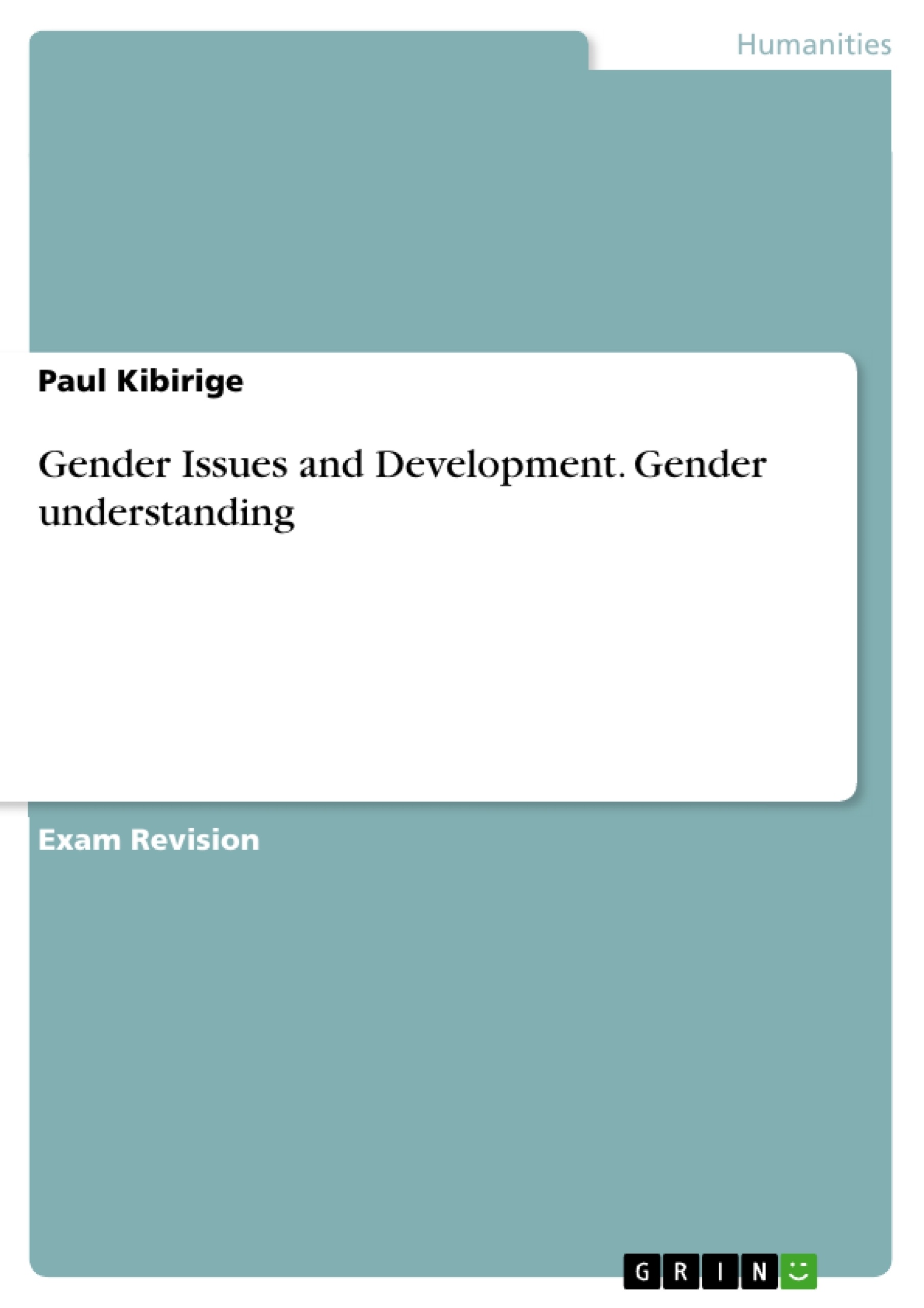You have been appointed the Minister of Gender and Social Development. Identify and explain the key gender issues that you would seek to address. Show the specific strategies that you would use in addressing those issues.
Gender is defined by FAO as ‘the relations between men and women, both perceptual and material. Gender is not determined biologically, as a result of sexual characteristics of either women or men but is constructed socially. It is a central organizing principle of societies, and often governs the processes of production and reproduction, consumption and distribution’ (FAO, 1997). Despite this definition, gender is often misunderstood as being the promotion of women only. However, as we see from the FAO definition, gender issues focus on women and on the relationship between men and women, their roles, access to and control over resources, division of labor, interests and needs. Gender relations affect household security, family well-being, planning, production and many other aspects of life (Bravo-Baumann, 2000)
Table of Contents
- Introduction
- Identified Gender Issues and Strategies to Address Them
- Promoting Gender Equality
- Curbing Gender-Based Violence
- Stopping Child Marriage and Sexual Harassment
- Making Education Gender Sensitive
Objectives and Key Themes
The main objective of this document is to identify key gender issues in Uganda and outline strategies for addressing them from the perspective of the Minister of Gender and Social Development. The strategies focus on improving gender equality, combating gender-based violence, and promoting gender-sensitive education.
- Gender Equality and Economic Empowerment
- Combating Gender-Based Violence (GBV)
- Addressing Child Marriage and Sexual Harassment
- Promoting Gender-Sensitive Education
- Strengthening the Rule of Law and Access to Justice
Chapter Summaries
Introduction: This introductory section defines gender, highlighting the social construction of gender roles and responsibilities. It emphasizes that gender issues concern the relationships between men and women, their roles, access to resources, and the division of labor. The section also introduces the mandate of the Ministry of Gender and Social Development in Uganda, emphasizing its role in protecting vulnerable populations and promoting gender equality. The definition of gender equality is clarified, stressing that it aims for equal consideration of women's and men's needs and aspirations, not necessarily sameness.
Identified Gender Issues and Strategies to Address Them: This chapter presents a comprehensive analysis of key gender issues and proposes specific strategies to address them. It divides these issues into several core areas. The section on promoting gender equality outlines strategies to create competitive markets, promote physical and financial development, strengthen the rule of law, facilitate openness to trade, increase human capital, ensure equal access to employment and skills, and improve access to infrastructure and utilities. The section on curbing gender-based violence details strategies to increase access to response services, enhance prevention systems, and mainstream GBV into humanitarian responses. The chapter further addresses child marriage and sexual harassment, and improving gender sensitivity in education systems. The strategies presented are multifaceted, combining policy changes, community engagement, and resource allocation to achieve meaningful and sustainable change.
Keywords
Gender equality, gender-based violence, child marriage, sexual harassment, gender-sensitive education, economic empowerment, human capital, rule of law, access to justice, Uganda, social development, policy strategies.
Frequently Asked Questions: Uganda Gender Issues and Strategies
What is the main objective of this document?
The main objective is to identify key gender issues in Uganda and outline strategies for addressing them from the perspective of the Minister of Gender and Social Development. The strategies focus on improving gender equality, combating gender-based violence, and promoting gender-sensitive education.
What are the key themes explored in this document?
The key themes include gender equality and economic empowerment, combating gender-based violence (GBV), addressing child marriage and sexual harassment, promoting gender-sensitive education, and strengthening the rule of law and access to justice.
What gender issues are identified in the document?
The document identifies several key gender issues, including gender-based violence, child marriage, sexual harassment, and lack of gender-sensitive education. It also highlights the need for gender equality and economic empowerment for women.
What strategies are proposed to address these gender issues?
Strategies include creating competitive markets, promoting physical and financial development, strengthening the rule of law, facilitating openness to trade, increasing human capital, ensuring equal access to employment and skills, improving access to infrastructure and utilities, increasing access to response services for GBV, enhancing prevention systems, mainstreaming GBV into humanitarian responses, and improving gender sensitivity in education systems. The strategies are multifaceted, combining policy changes, community engagement, and resource allocation.
What is the definition of gender equality used in this document?
The document defines gender equality as aiming for equal consideration of women's and men's needs and aspirations, not necessarily sameness.
What is the role of the Ministry of Gender and Social Development in Uganda?
The Ministry plays a crucial role in protecting vulnerable populations and promoting gender equality in Uganda.
What is the scope of the document's analysis?
The document provides a comprehensive analysis of key gender issues in Uganda and proposes specific strategies for addressing them.
What are the key words associated with this document?
Key words include: Gender equality, gender-based violence, child marriage, sexual harassment, gender-sensitive education, economic empowerment, human capital, rule of law, access to justice, Uganda, social development, policy strategies.
What does the introduction section cover?
The introduction defines gender, highlighting the social construction of gender roles and responsibilities. It emphasizes that gender issues concern the relationships between men and women, their roles, access to resources, and the division of labor. It also introduces the mandate of the Ministry of Gender and Social Development in Uganda.
What does the chapter on "Identified Gender Issues and Strategies to Address Them" cover?
This chapter presents a comprehensive analysis of key gender issues and proposes specific strategies to address them in areas such as promoting gender equality, curbing gender-based violence, stopping child marriage and sexual harassment, and making education gender-sensitive.
- Quote paper
- Paul Kibirige (Author), 2020, Gender Issues and Development. Gender understanding, Munich, GRIN Verlag, https://www.grin.com/document/903303



